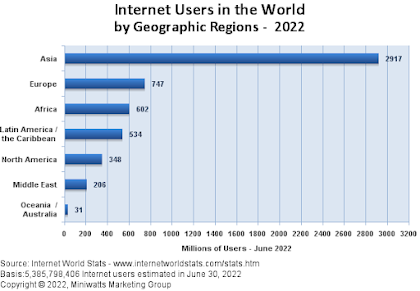4). A Comparison Between the Process of Traditional Recruitment and E-Recruitment
The recruitment process can vary in complexity and degree of difficulty depending on the recruitment objectives and the recruitment sources chosen (Breaugh& Starke, 2000)
The most common used sources for external recruitment are
newspaper ads, private and public employment agencies, Internet job boards,
corporate websites, employee referrals, colleges and universities, search
firms, job fairs, etc. (Ployhart, Schneider, & Schmitt, 2006)
Traditional Recruitment
In traditional recruitment, the candidates search is
generally conducted internally by the Human Resources department. It can
include methods such as internal promotion, the use of existing networks within
the company, and advertising through traditional methods.
Furthermore, traditional methods refer to print advertising, a vacancy being put on company’s website or in the local employment office.
The paper-based recruitment is a one of a traditional
recruitment process and following figure1 will be summarized the recruitment
process using job advertising.
Figure 1: Traditional paper-based recruitment process using
job advertising
With respect to the ideas of Anna B. Holm (2012),
recruitment of external candidates from job advertising usually starts with the
identification of required applicants, their location and placement in the
labour market, and proceeds with activities designed to attract and persuade
qualified applicants to apply. Job applications are then received, screened,
and sorted, leading to the drawing up of a shortlist. The process ends with
communicating the pre-screening results to applicants.
E-recruitment
Modern Recruitment harnesses the power of technology to
track down potential candidates. This typically includes online job boards
and Social Media sites, usually LinkedIn, but other Social Media channels can
be used if it is deemed appropriate for the company and the role requirements.
Source: dgtalworld (2014)
According to dgtalworld (2014), following are the steps of
e-recruitment,
- Job Announcement
- Select position and apply
- Collect CVs
- Filter – shortlist – select
- Schedule interviews
- Select right candidate
Figure 2: The design and sequence of tasks in traditional
paper-based recruitment versus e-recruitment
Source: Celina, Maja (2018)
According to Celina Sołek-Borowska, Maja Wilczewska the main
changes in the recruitment process design using e-recruitment versus
traditional paper-based recruitment process were in the sequence of the process
tasks. Unlike in the traditional recruitment process, the task of communicating
with applicants and processing incoming applications was performed
simultaneously with the task of attracting applicants suggesting a major change
in the traditional recruitment. The process that demanded a lot of work was the
one concerned with communicating with applicants and became a focal task.
Conclusion:
While traditional methodologies have worked well for a long time, a new era of technology is being hustled. Traditional methodologies for recruitment are being pushed out for being too expensive and too time-consuming for the modern workplace setting. They are also an ineffective way of searching for truly rare-finds within industries and modern e-recruitment styles save the company’s Human Resources department a lot of time in comparison over traditional methods.
References:
- Anna B. Holm (2012), E-recruitment: Towards an Ubiquitous Recruitment Process and Candidate Relationship Management, Article in Zeitschrift für Personalforschung August 2012, 241-256
- Breaugh, J. A., & Starke, M. (2000). Research on employee recruitment: so many studies, so many remaining questions. Journal of Management, 26(3), 405-434.
- Celina Sołek-Borowska, Maja Wilczewska (2018), Research on New technologies in the recruitment process, Economics and Culture 15(2), 25-32.
- dgtalworld (2014). Dgtal E-Recruitment Process. [video]<https://www.youtube.com/watch?v=TnUlNYGCVZE&feature=emb_rel_end> [Accessed 15 August. 2019].
- Ployhart, R. E., Schneider, B., & Schmitt, N. (2006). Staffing organizations: Contemporary practice and theory (3rd ed.). Mahwah, New Jersey: Lawrence Erlbaum Associates, Publishers.
- Talent Acquisition and Modern Recruitment Techniques, October 19, 2021, Business Site. <https://talent2win.com/talent-acquisition-recruitment-methods/>



Very insightful content about traditional and e-recruitment methods. E-recruitment seems more advantageous in the sense that it avoids errors caused by miscommunication, loss of paperwork, and the cost of recruitment is also reduced significantly. It is also noteworthy that traditional recruiting is considered as as consequent batch process (Martin and Hetrick, 2006) whereas e-recruitment is an online and continuous process with all tasks of recruitment being performed simultaneously.
ReplyDeleteThanks in advanced uditha. although athere are many benefits on online recruitment, there is an insecurity in personal data & financial loss due to the increasing adoption of ATS has also attracted the interest of scammers (Sokratis,2017). ATS is a tracking system recently play a big role in online recruitment.
Delete